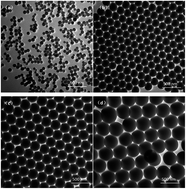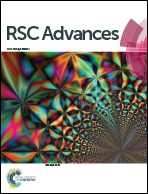In situ charge neutralization on governing particle coagulation nucleation and size distribution in macroemulsion polymerization
Abstract
Fabricating monodispersed polymer latex particles with ∼300 nm size at high monomer concentrations by batch macroemulsion polymerization remains significantly challenging because of latex stability. In this study, we developed a novel approach based on in situ charge neutralization to prepare 40 wt% solid content latex containing monodispersed sub-300 nm latex particles. The cationic initiator 2,2′-azobis(2-methylpropionamidine)dihydrochloride (AIBA) was used to induce in situ charge neutralization in the particle nucleation period and shield the negative charges of surfactant sodium dodecyl sulfate molecules to further reduce the electrostatic repulsion between primary particles, resulting in primary particle coagulation nucleation. The primary particle coagulation promoted particle number decreased to ∼1016 L−1, and the average particle size increased to ∼100 nm at a very low monomer conversion (<0.12). With increasing AIBA concentrations from 0.6 and 0.8 to 1.0 wt% (the molar ratio of AIBA/SDS is 0.64, 0.85 and 1.06, respective), the average particle size of the latex ultimately attained from 170.6 and 221.7 to 288.0 nm, respectively. Moreover, the addition of an electrolyte and copolymerization composition also governed the particle coagulation extent and affected the particle size distribution of the ultimate latex particles. To the best of our knowledge, this is the simplest, most efficient, and inexpensive approach to prepare large sized, monodispersed latex particles.


 Please wait while we load your content...
Please wait while we load your content...